News
Washington gets a stormwater scouting
Climate Change, Environmental, Sound Rivers, Stormwater, Stormwater Issues, Stormwater Restoration Projects, Stormwater Runoff, Tar-Pamlico Watershed, Water Quality
Posted on September 21st, 2023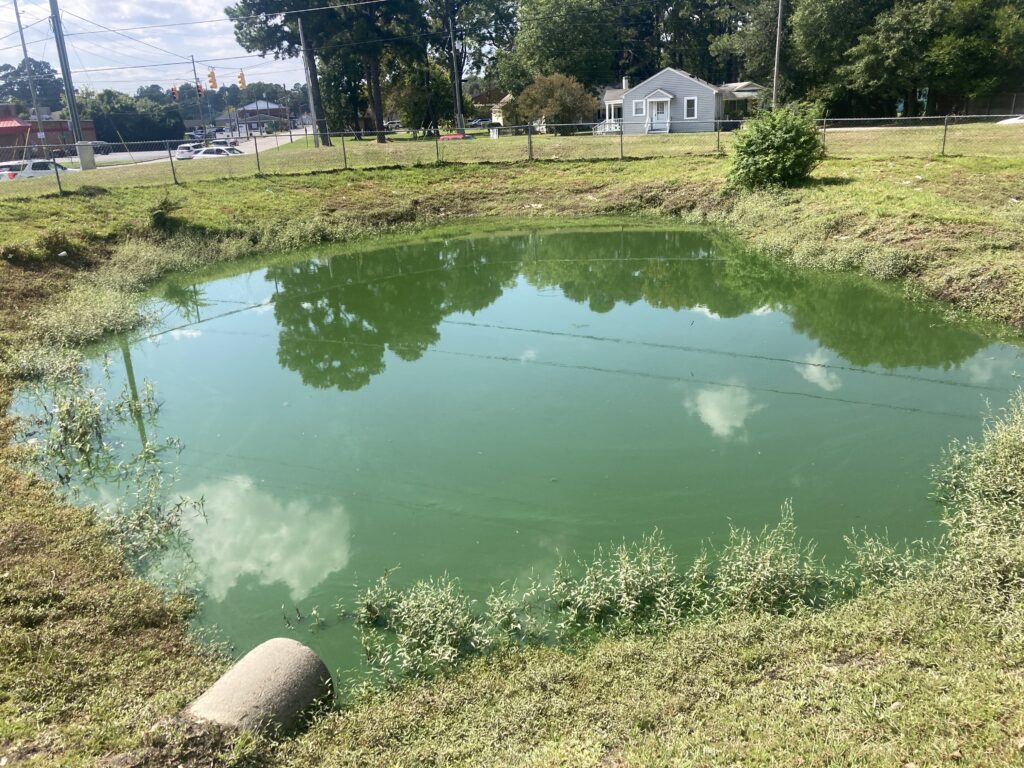
This algae-filled retention pond, one of three in Jack's Creek's stormwater infrastructure, is a potential site for an innovative stormwater control measure.
Sound Rivers Program Director Clay Barber had a field day searching for potential stormwater control measures in Washington on Wednesday.
Clay met up with City of Washington staff, Public Works Director Hope Woolard, Assistant Director Wayne Black and North Carolina State University Extension Associate Amber Ellis to search for locations where green stormwater infrastructure would best benefit the Jack’s Creek watershed. Jack’s Creek is a tributary of the Pamlico River and funnels much of Washington’s stormwater into the larger body of water.
Along for the tour was Sound Rivers’ new Pamlico-Tar Riverkeeper, Katey Zimmerman, who officially joined the staff on Tuesday and got an introduction to the 9-Element Watershed Plan underway for Jack’s Creek on Wednesday.
Their scouting for stormwater projects paid off, Clay said.
In the greenway of the Sixth Street Park, a rock-filled, exposed ditch between two underground pipes and the greenway itself could be transformed for flood mitigation.
”It could be a cool opportunity to put a constructed wetland where the ditch is or, next to that, some recreational spaces, such as a soccer field, to soak up stormwater,” he said.
Farther south, at the corner of MacNair and East Fourth streets, a large and largely unused parking lot has potential.
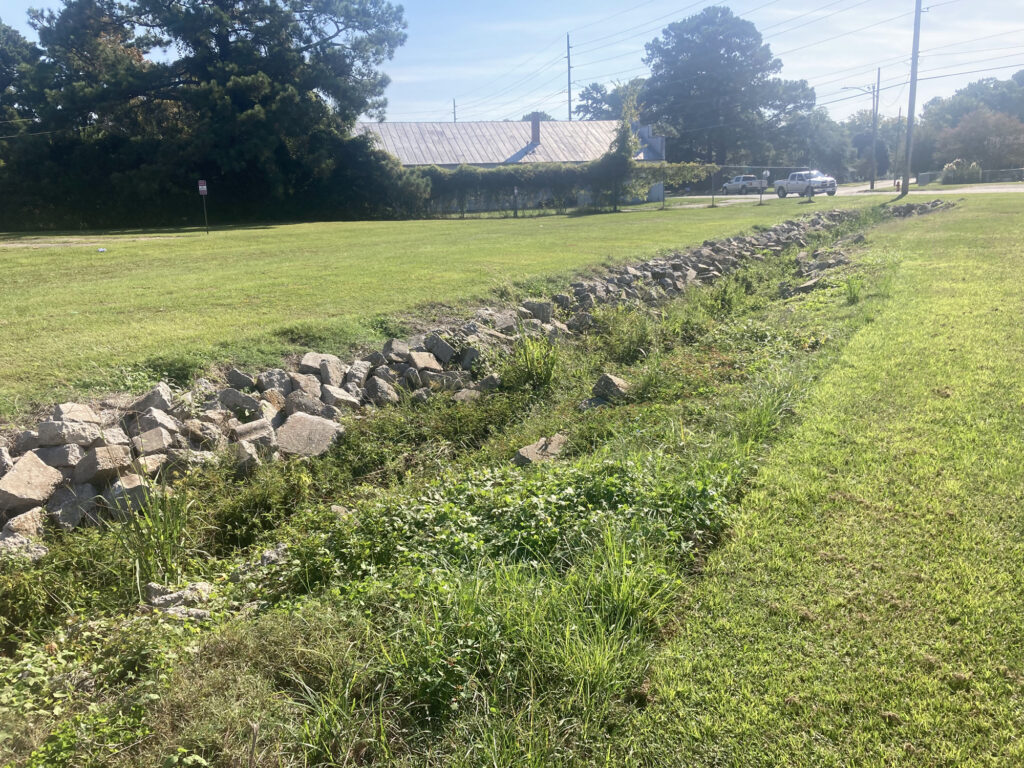
“There’s a drop inlet in the middle of half of this old parking lot that would be a great spot to put a rain garden,” Clay said. “There’s lots of opportunity to remove parking lot and concrete that is unused.”
Since the Jack’s Creek stormwater infrastructure is old, the group also visited the hospital grounds where two of the watershed’s three retention ponds are located. Clay said at least one is currently algae-ridden, which led to a discussion on more innovative solutions, such as floating wetland mats. These mats float on the water and hold wetland plants, soaking up both water and nutrients from the water beneath.
“It’s like an island of wetland plants, and they’re good for retrofits — in this case, a detention pond that already exists,” he said.
Other discussion centered around how to incorporate smaller projects in highly urbanized areas where concrete is common. One example: a paved alley between houses or businesses could be converted into a green alley, in which concrete is replaced with permeable pavement, rainwater harvesters collect rain from adjacent rooftops and greenery is planted.
“We saw lots of great opportunities for future stormwater control measures. The Jack’s Creek watershed has a history with flooding, and big or small, projects like these can help mitigate flooding,” Clay said.
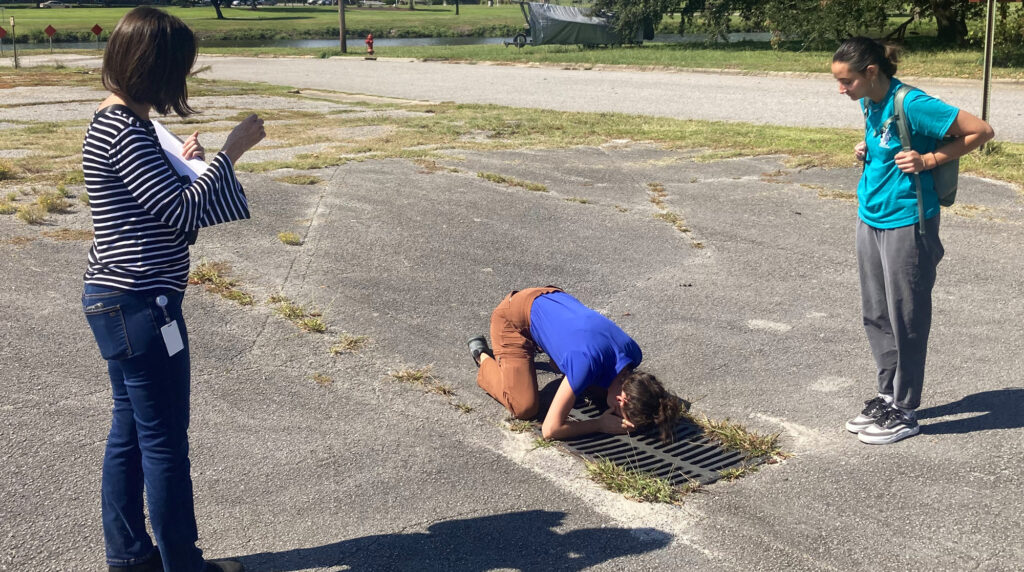
Related News
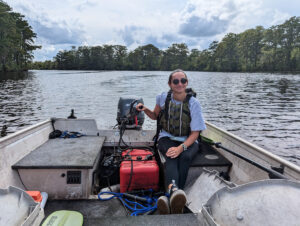
Riverkeeper monitoring Tar-Pamlico Water Trail
July 25th 2024

Rain ramps up trash-trap cleanouts
July 25th 2024

Riverkeeper, intern take on emergency trash trap cleanout
July 25th 2024

Tar-Pam Riverkeeper investigates Cub Creek turbidity
July 25th 2024
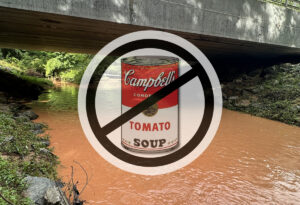
Heavy rains lead to sky-high turbidity on Lick Creek
July 25th 2024
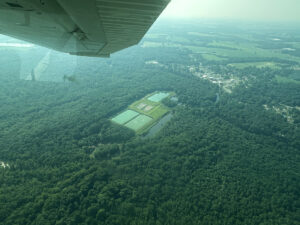
Riverkeeper: What goes up, must come down
July 18th 2024
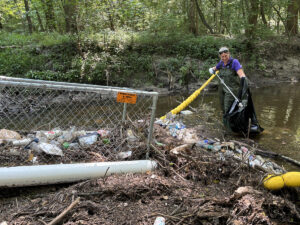
Greenville’s trash trap gets emergency cleanout
July 18th 2024

Sound Rivers gets close up of cyanobacteria
July 18th 2024

